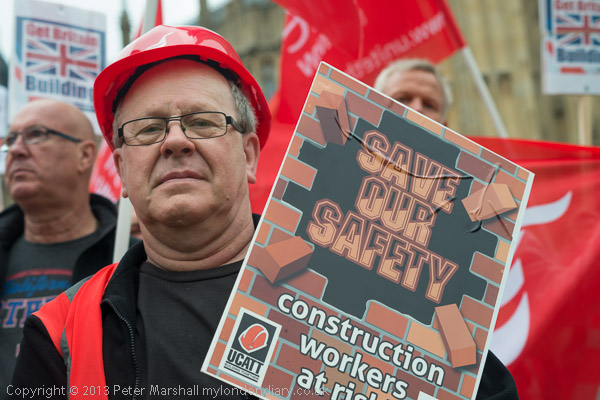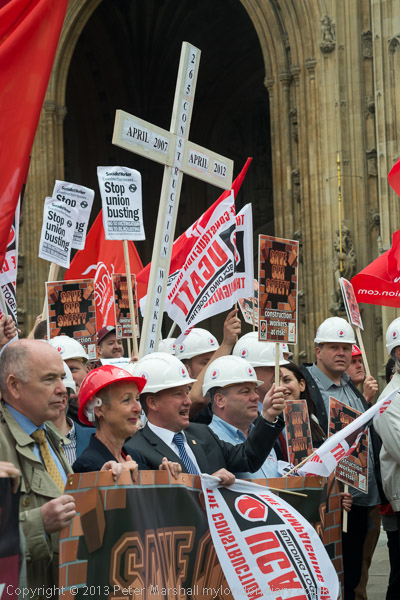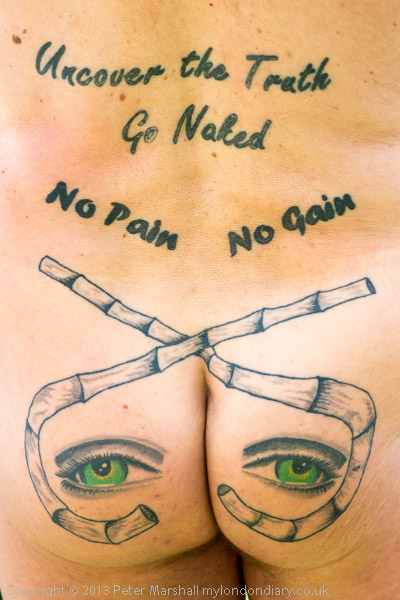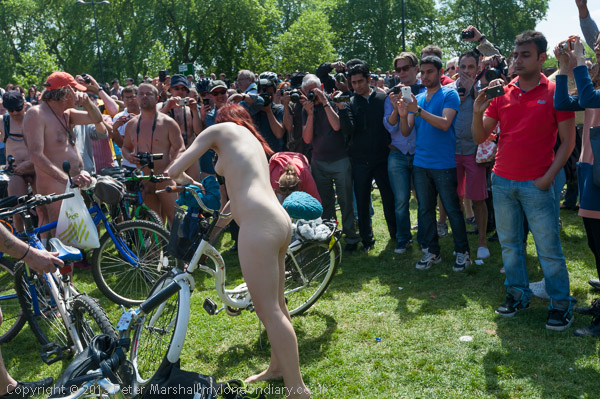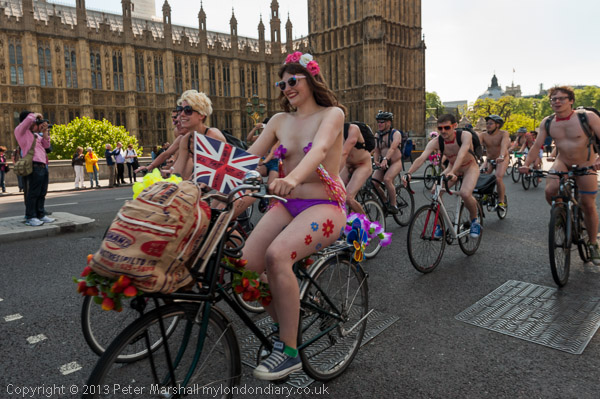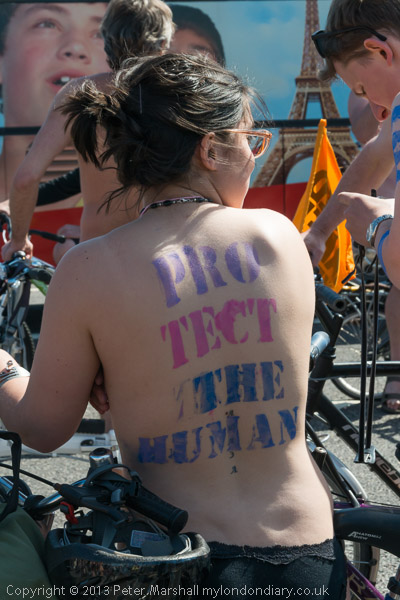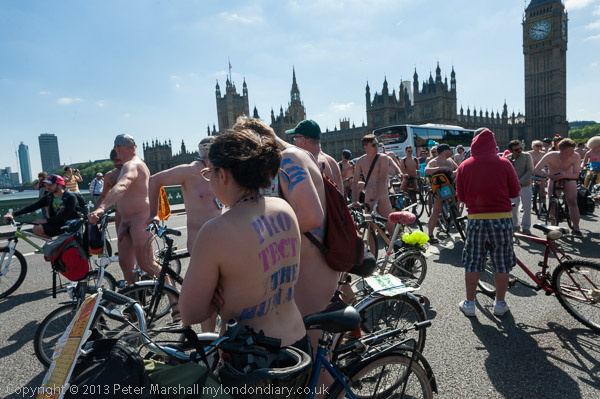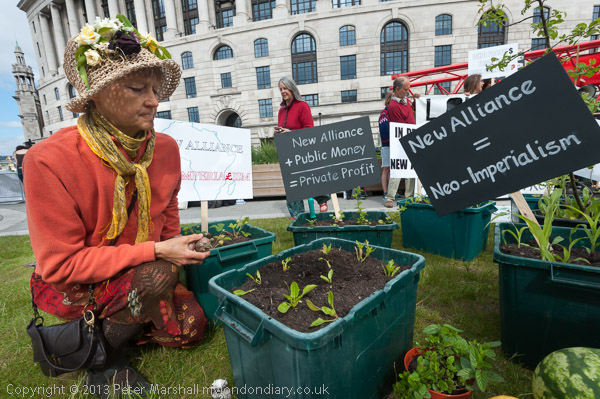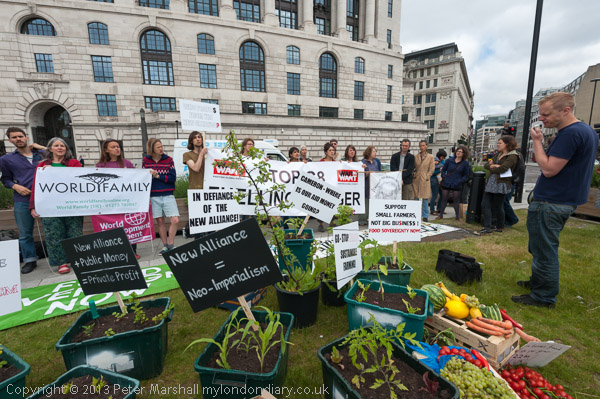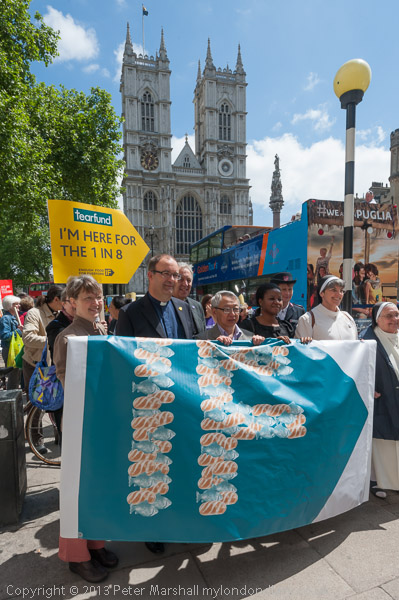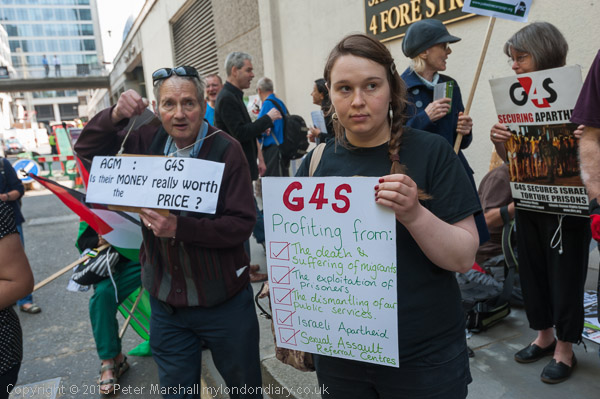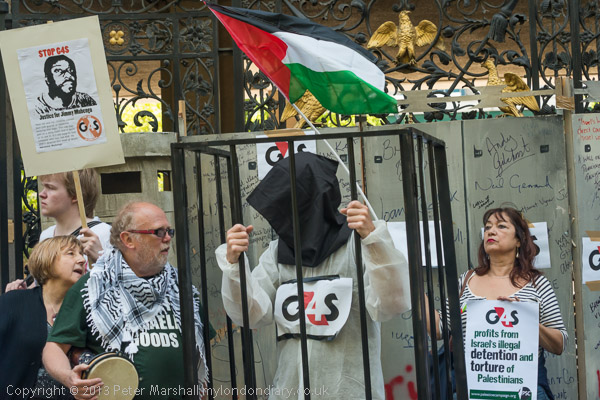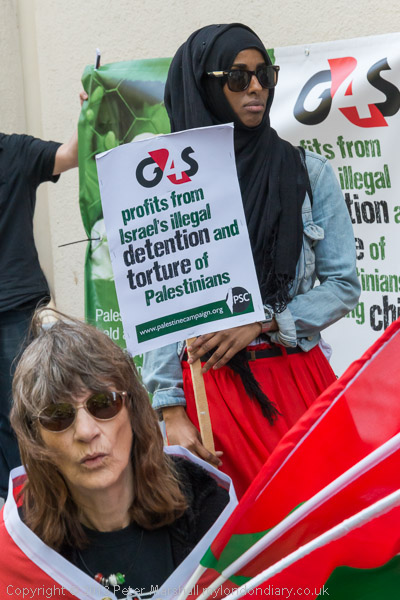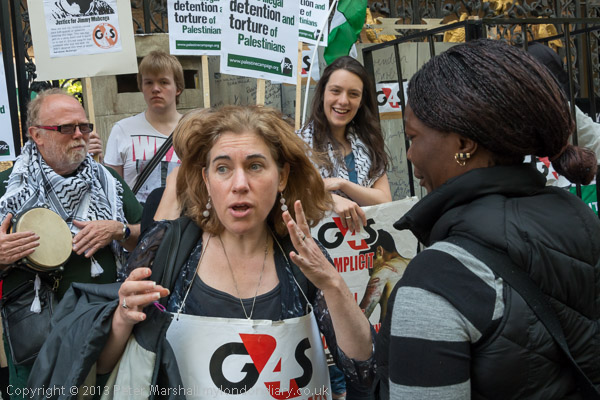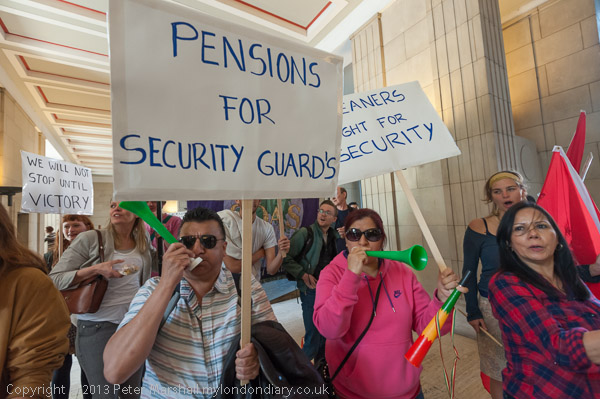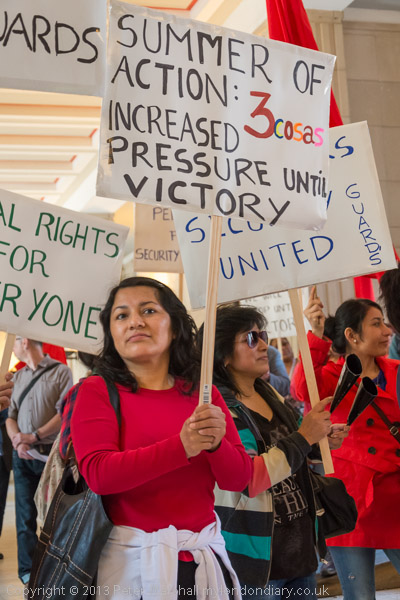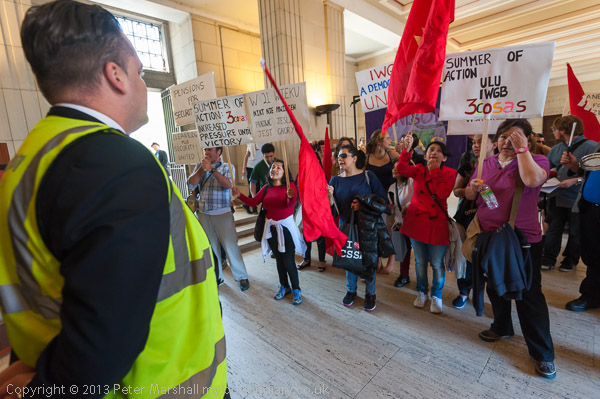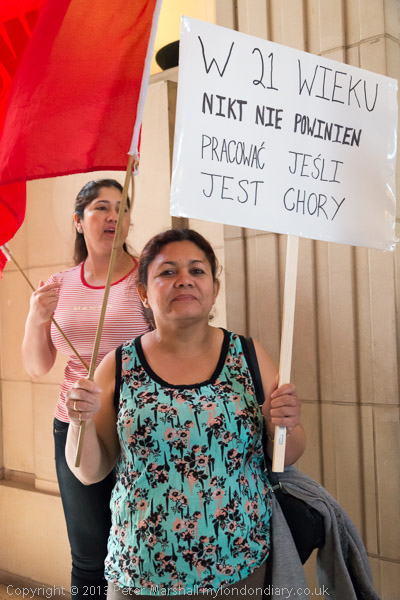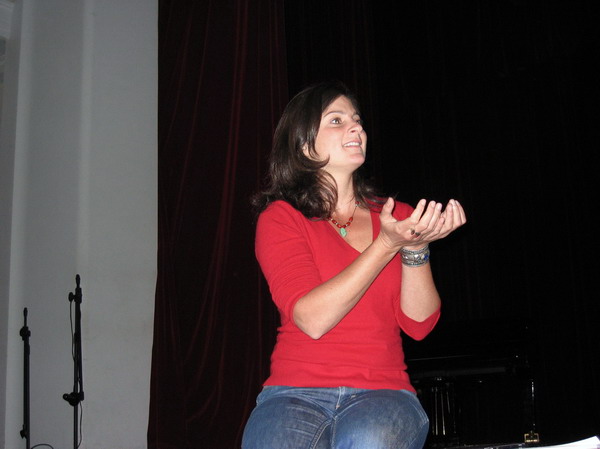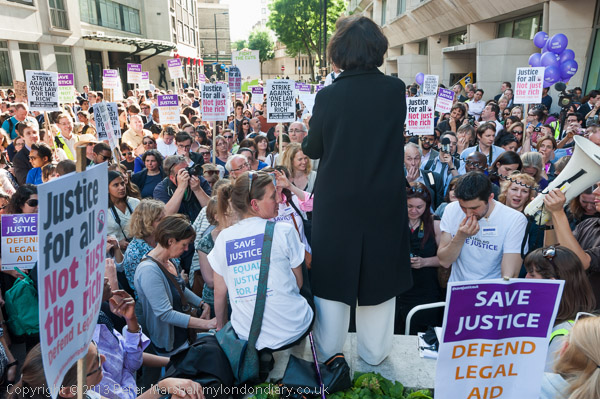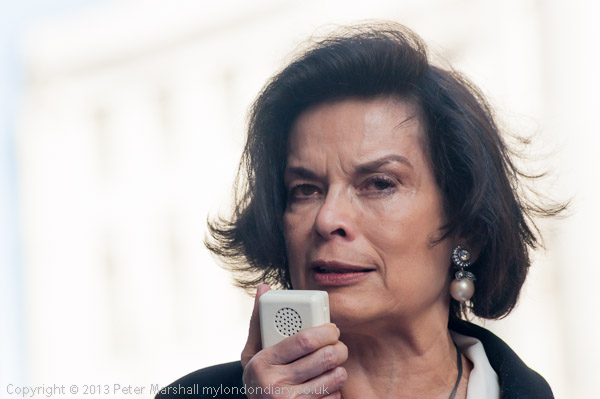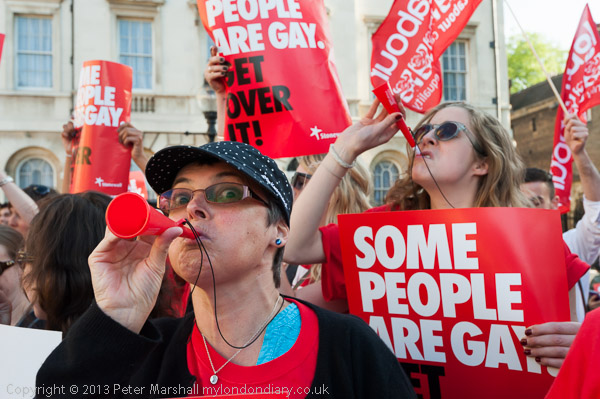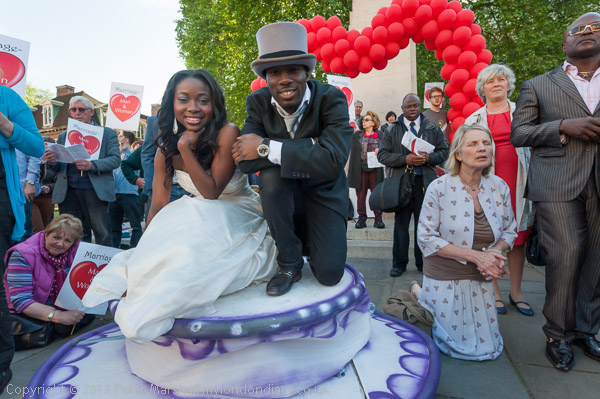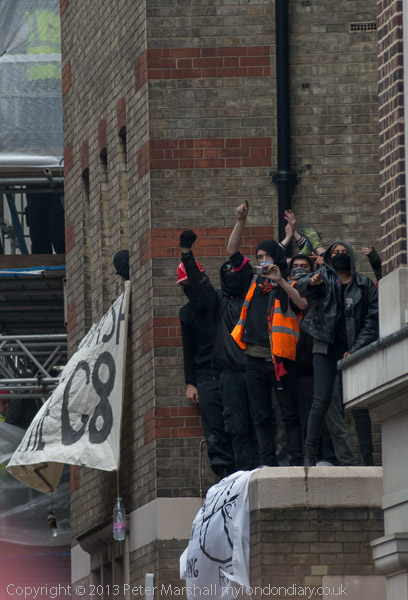
There are times when the police reaction to protests is so clearly disproportionate that even they seem shocked by it – or perhaps by the public reaction to it.
Despite the occasional efforts of the ‘black bloc’ at protests here we don’t have a great tradition – at least not recently – of violence by protesters at protests. Almost all of the incidents in recent years, for example during the student protests in 2011, were either provoked by police attacks on protesters or probably engineered by the police actions, aided by undercover police.
A few of them have been caught out, with incriminating incidents captured on video as ‘agents provocateurs’ flash their warrant cards to their uniformed mates to get through police lines or evidence comes out in trials and otherwise. Much that was already known or rumoured in activist circles about undercover policing has come out into the wider media in recent weeks, along with some new information, particularly in The Guardian, who have also revealed that police have records on around 9,000 political activists in the UK, despite the fact that they have committed no crime. Being a political activist seems to me to be a civic duty rather than a reason for the police to keep tags on you (or me!)
Several times in the past few years senior officers of the Met have given interviews to the press in advance of protests spreading rumours of violence and mayhem, drumming up panic which they then use to justify draconian police measures. Ahead of one protest they spread rumours that protesters would use catapults, and on the day thoughtfully provided these dropped in the area in a black bin bag.
The police rationale for the huge exercise against a squat in Beak St, Soho on the morning of the first day of four of activities ahead of the G8 seemed particularly lame, even to the tamer of the media outlets. That there were rumours that some activists might be intending to use paint or paintballs seemed hardly a justification for closing down a large area of London with hundreds of police, and for the violent storming of the social centre that was acting as the ‘convergence centre’ for the protests.
Not that I approve of protesters throwing paint – and particularly not at me as happened in March 2011 while I was photographing the protests on Oxford St. But both the manner and extent of the police action seemed completely over the top, though like the rest of the press I was kept well away from the action. There was a small press area along the street east of the building, too far away to get any real view of the action. The public were being allowed roughly the same distance to the west, and from there you could see just a little more. But the picture here was still taken at the long end of the 75-300mm using DX format – a 450mm equivalent lens.
Of course there are good reasons why the press – and the public – sometimes have to be kept back from events. Here it seemed to me more about trying to prevent people seeing what was happening than public safety or getting in the way of the police.
Since it seemed unlikely I had any real chance of seeing anything worth photographing I moved away an joined those who had managed to make it to Piccadilly Circus for the ‘J11 Carnival against Capitalism’. On my way I saw a number of people being searched on the street. One woman had just been put in a police van because a pen had been found in her handbag.
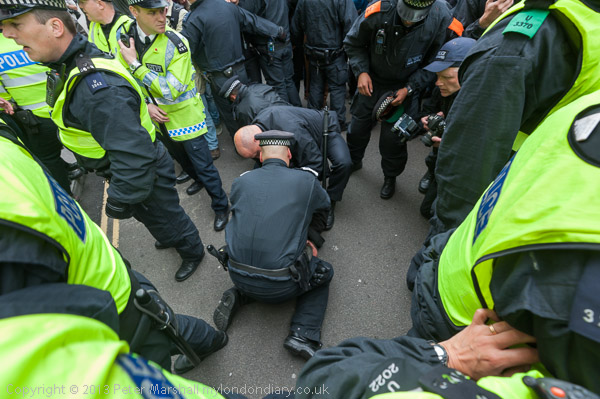
As the protesters walked with a samba band down Piccadilly, groups of police rushed into the crowd and grabbed a couple of them. Other protesters tried to grab them back from the police and there were scuffles, and police formed a ring around one of those who had been grabbed. he was on the ground and two officers appeared to be greatly enjoying punching him, but a senior officer pushed me back as I tried to get a clear view and photograph what was happening. I moved a little around the ring and managed to get a picture holding my camera up over the police heads before being pushed back. The police really did not want people to see what was happening. Eventually I went down on my knees and managed to get a picture between the legs of two of the officers before I had to move away.
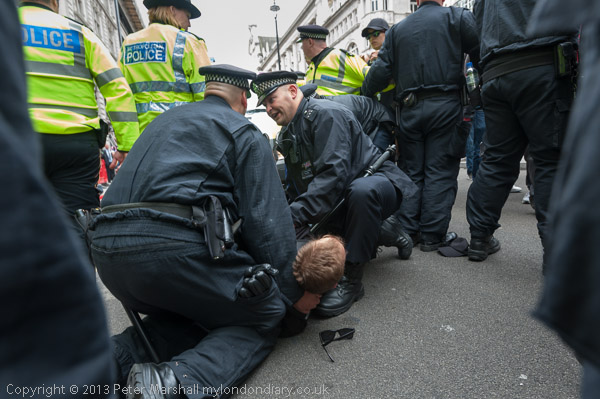
Elsewhere officers were threatening other protesters with arrest, and some of them ran down a side-street. There followed a chase around some of the side-streets of Mayfair, with again police grabbing a protester and making an arrest for no apparent reason. Eventually we emerged by Green Park Station and there were further searches and arrests. Throughout all this (and afterwards) as I report in J11 Carnival against Capitalism, ‘I saw no attacks on property and no unprovoked violence by the protesters.’ There was a great deal of shouting and some name-calling directed against the police, but all of the actual physical scuffles began when police grabbed a protester.
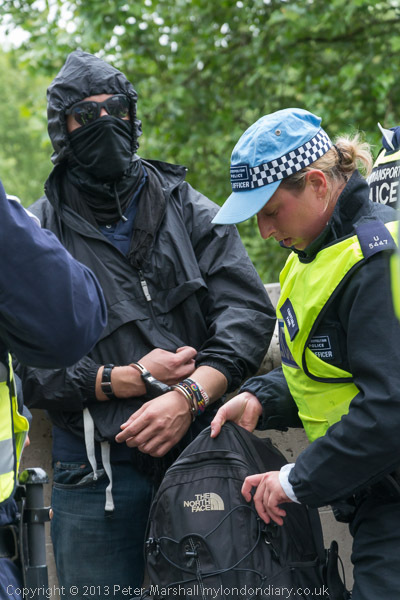
Later in the day the police seem to have calmed down a little and perhaps orders had gone out to stop harassing the protesters. They stood and watched and didn’t interfere as the protest continued on Piccadilly, on then Regent St.
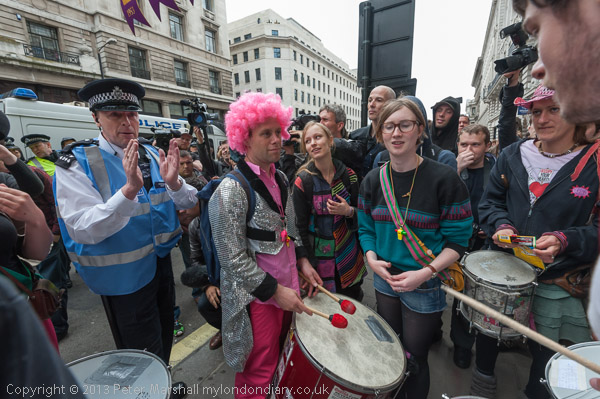
There was a little moment of farce as a ‘Police Liaison Officer’ came and warned the samba band they were breaking a City of Westminster bye-law by playing music on the street without a licence as they protested outside the offices of arms company Lockheed Martin (above), and a few minute later police seemed close to panic as the protesters approached BP, but really there was not a lot happening.
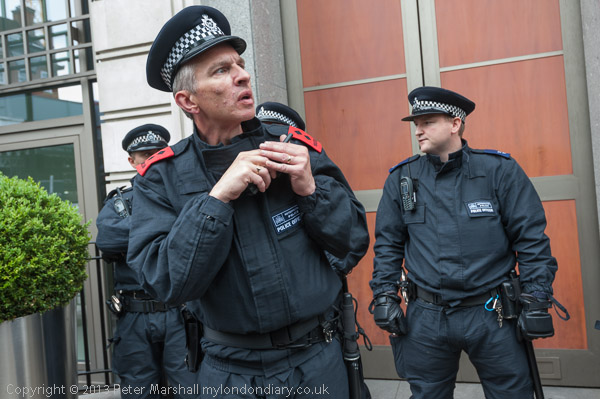
It seemed time to go home, and I did.
Continue reading Police Go Over the Top
